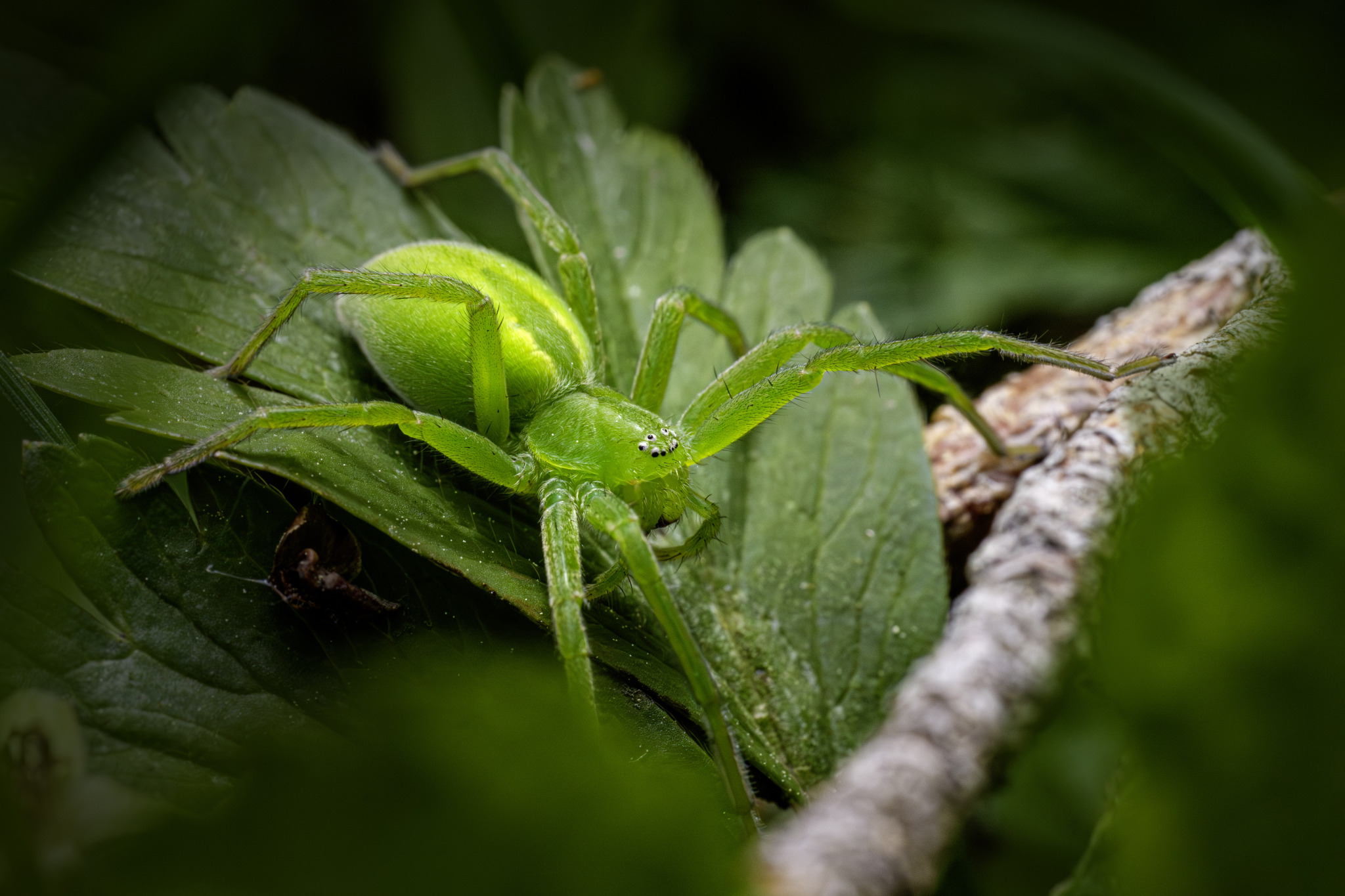The Green Huntsman Spider (Micrommata virescens) is a distinctive and fascinating species of spider. Here is a detailed overview:
Appearance
- Size:
- Females: 12 to 15 millimeters in body length.
- Males: Slightly smaller, 8 to 10 millimeters.
- Coloration:
- Both sexes are bright green, which provides excellent camouflage in their leafy habitats.
- Males may have a red stripe along the body and legs, whereas females are uniformly green.
- Body Structure:
- Flat bodies with long legs adapted for hunting and quick movement.
Habitat
- Preferred Habitats:
- Found in deciduous forests, grasslands, meadows, and gardens.
- They favor areas with dense vegetation where their green color offers the best camouflage.
- Geographic Range:
- Widespread in Europe, extending to parts of Asia.
Behavior
- Hunting and Feeding:
- Diet: Insects and other small arthropods.
- Hunting Strategy: They are active hunters, relying on their excellent vision and speed to catch prey rather than building webs.
- Activity:
- Diurnal (active during the day), which is unusual for many spider species that are typically nocturnal.
Life Cycle
- Eggs:
- Females lay eggs in a silk sac, which they guard until the spiderlings hatch.
- Spiderlings:
- Hatch from the egg sac and go through several molts before reaching adulthood.
- Adults:
- Lifespan of about one year.
Identification Tips
- Bright Green Color: The vivid green color of their bodies is the most distinguishing feature.
- Body Shape and Movement: Their flattened body and swift, agile movements are characteristic.
Ecological Role
- Pest Control: As predators, they help control populations of insects and other small arthropods.
- Prey: Serve as prey for larger predators, such as birds and small mammals.
Conservation Status
- Population: Generally stable across their range.
- Threats: Habitat loss and pesticide use can impact local populations.
Conservation Efforts
- Habitat Protection: Preserving natural habitats and maintaining areas with dense vegetation support their populations.
- Reduced Pesticide Use: Limiting pesticide application helps protect these beneficial spiders.
Human Interaction
- Beneficial Spiders: Help control insect populations, making them beneficial to gardeners and farmers.
- Non-aggressive: Generally not harmful to humans, and bites are rare and mild if they occur.
Summary
The Green Huntsman Spider (Micrommata virescens) is a striking and beneficial spider species known for its vivid green color and active hunting behavior. With a preference for leafy habitats where it can blend in, this spider plays a crucial role in controlling insect populations. By preserving natural habitats and practicing environmentally friendly gardening, we can support the health and stability of their populations.
Visited 379 times, 12 visit(s) today
Views: 592
Subscribe to the newsletter:
